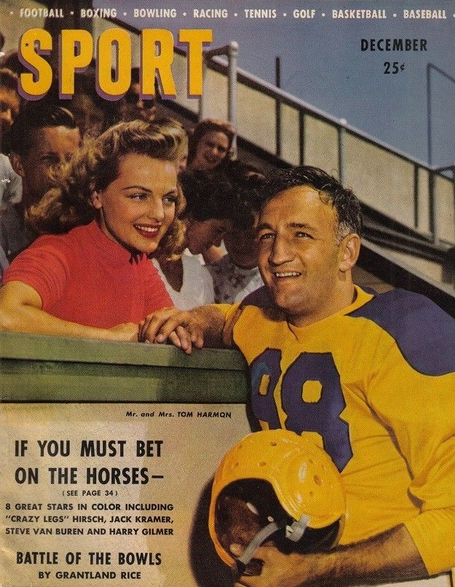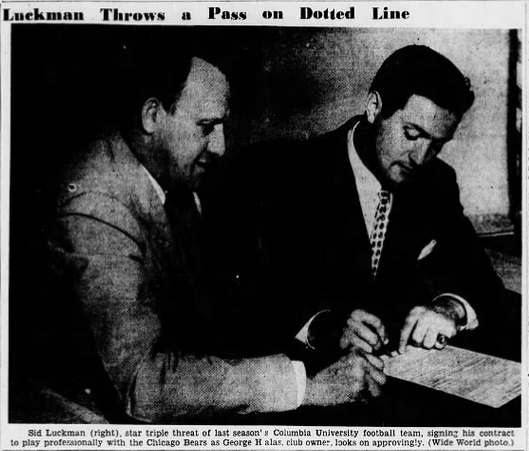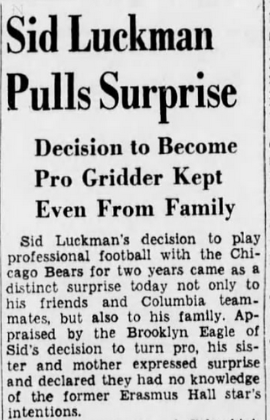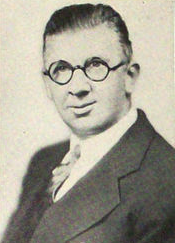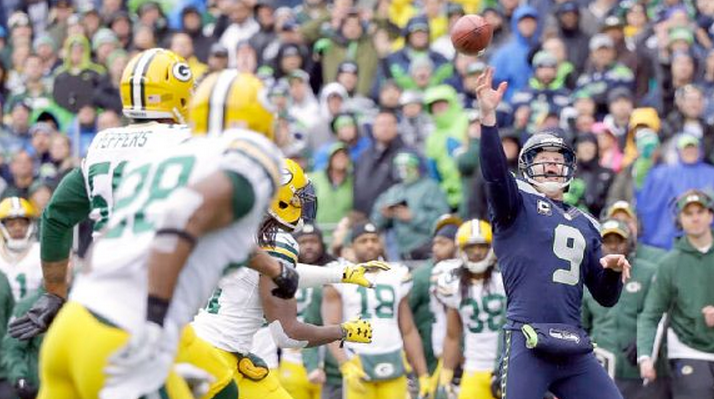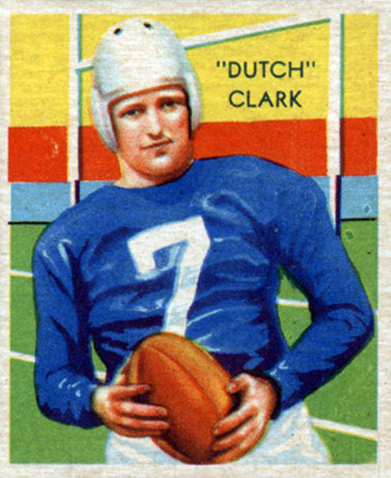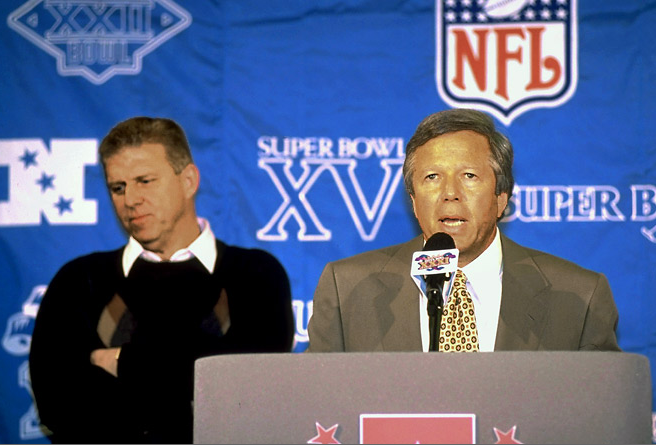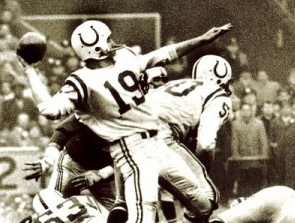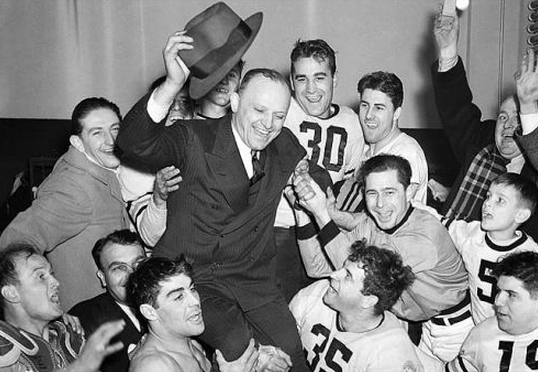Dan Pompei wrote a piece for Bleacher Report not long ago that began like this:
There are not many footprints on the path Chris Borland has chosen to walk. His approach to the NFL, and life after it, represents a way of thinking that is very different from the thinking of most of his football forefathers.
Fifty years ago, or even 10 years ago, promising players considered the NFL a destination — not a rest stop on life’s highway. They did all they could to extend their shelf life. They didn’t consider shortening it, as Borland has, retiring after a standout rookie season with the 49ers.
But as time — and eras — have passed, so too have perspectives on the role football should play in a player’s life.
Actually, in the league’s first 40 years, many of Borland’s “football forefathers” thought like he did, considered the NFL a short-term gig. Unlike today, the game didn’t lend itself to a long, lucrative career. In the single-platoon era (1920-49), players often played the entire game, or close to it. The travel, too — on trains, buses and even in private cars — was more onerous. Some teams would be on the road for a month or more.
You also could make the case that competition for jobs was greater because there were fewer of them. In 1941, the last season before the war, there were 330 roster spots in the league and just 11 players who were 30 or older (oldest: 33). Last year there were 1,696 roster spots and 331 thirtysomethings (oldest: 42). Nobody ever talks about that when they talk about the early days: that it was harder to break into the league and harder to stay there — which, naturally, led to shorter careers.
Let me throw a few more numbers at you so you’ll get the complete picture. This is how many players in each decade played in all 10 seasons of that decade:
1920s: 3
1930s: 2
1940s: 5
1950s: 18
1960s: 74
1970s: 109
1980s: 92
1990s: 158
2000s: 163
2010s: TBD (but likely more than 163, Chris Borland or no Chris Borland)
From the ’20s through the ’50s, the prevailing philosophy seemed to be: play four or five years if you can, burn off any testosterone left over from college, sock away some dough (provided there’s some dough to sock away) and, in the offseasons — which were quite a bit longer then — try to prepare for your Next Life (in coaching, business, teaching, whatever).
George Halas’ Bears teams weren’t just successful on the field, they were successful off it. Several players, for instance, found the time during the season to go to medical and dental school. According to a 2011 story about John Siegal, an end in the ’30s and ’40s, his “typical day would spin the heads of today’s multimillionaire athletes. He attended Bears practice from 9 a.m. to noon, then headed to Northwestern University for dentistry classes from 1 p.m. until 5. One teammate, fullback Bill Osmanski, attended school with him; Halas had agreed to pay the pair’s tuition in addition to their salary.”
(Of course, clubs were more concerned for the players’ welfare in those days. As the Bears’ 1937 media guide noted: “A form of cod-liver oil is taken daily by the players when cold weather sets in.”)
Time and again, Halas would tell his team, “Football is a means to an end.” And in those leaner times, it was the soundest of advice. No player was so well paid that he could retire on his NFL earnings; he’d better have a Plan B (if not a Plan C).
But beyond that, there was more of an understanding that the human body wasn’t built for such punishment — not over the long haul, at least. Doak Walker, the Lions’ Hall of Fame back, quit in 1955 after just six seasons. Tom Harmon, the first pick in the ’41 draft, played a mere two years (after a lengthy stint in the military) before going into sportscasting. The “indestructible” Bronko Nagurski took the knocks for eight seasons, then decided professional wrestling was a safer — and better-paying — alternative (though he came out of retirement in ’43 when the Bears were shorthanded). None of this was unusual.
But as you can see in the decade-by-decade figures, things began to change in the ’60s. The money got better, the medicine improved, the jobs multiplied — and suddenly you had players staying in the game until they were literally wheeled out on a gurney.
It also could be argued that modern players are more dependent on the game than they used to be — because the job has become so time-consuming, in-season and out. Who today could squeeze in med school classes around all the practices, meetings, weight-room sessions, public-relations appearances and everything else on the football calendar? It’s increasingly hard to lay almost any kind of groundwork for Life After Football. (We won’t even get into the dubious college “education” some of these guys receive, “learning” that sometimes doesn’t equip you to do much more than retain your eligibility.)
In recent years, a time bomb has gone off — the Concussion Issue — and people have begun to wonder whether the game has gotten too hazardous to the players’ health, whether this is the beginning of the end for Pro Football As We Know It. First of all, the game has always been too hazardous to the players’ health. No league has left a longer trail of broken bodies than NFL. It’s more a question of: How much are the players — and the fans who cheer them — willing to put up with? Will the risk of CTE cause young athletes to turn to other sports, or will the fame and fortune of football be too much of a lure? And even if a kid does opt to play the game, will he, as he grows older, try to limit the damage, as Borland did (and as players in the early decades did, though their retirements weren’t always of their own volition).
Then there’s the matter of whether the NFL will continue to be as popular if it takes such a toll on its participants — or whether it will remain as profitable if concussion settlements spiral out of control. You even have folks like Malcolm Gladwell suggesting football will become “a ghettoized sport, not a mainstream American sport” — that it will draw most of its players from the lower economic classes, those who have fewer “options” and “for whom the risks are acceptable. . . . It’s going to become the Army.” (Except, perhaps, in such places as Texas, Ohio and Pennsylvania, where it’s engrained in the culture.)
Here’s the thing, though: David Robinson made over $116 million in his 14 seasons in the NBA – and that doesn’t include endorsements. Yet his son, Corey, is a wide receiver at Notre Dame and may well be headed for an NFL career. In this instance, in other words, you have an extremely wealthy family — and a very intelligent dad, from my experience — who have spawned, of all things, a football player.
I could make the same point about Denzel Washington’s son, J.D., who was a running back at Morehouse College and spent a year on the St. Louis Rams’ practice squad. I ask you: How many NFL players come from more well-to-do backgrounds than Corey Robinson or J.D. Washington?
As long as a sport offers the chance for glory — never mind an eye-popping paycheck — it will attract players across the economic spectrum, I’m convinced. These players might, in the years to come, spend more time weighing the risk vs. the reward, and that’s a healthy thing. But the idea that vast numbers of them will simply stop playing, like Borland, is a bit farfetched. What it figures to come down to, ultimately, is the fans — and whether they, knowing the game’s consequences (loss of motor and cognitive function, etc.), stop watching. That’s when the league will really be in trouble.
But that, too, seems a bit of a stretch. This, after all, is America, the world’s biggest reality show. Pro football can almost be thought of as a spinoff of Fear Factor. Or is it the other way around?
Source: pro-football-reference.com, basketball-reference.com

